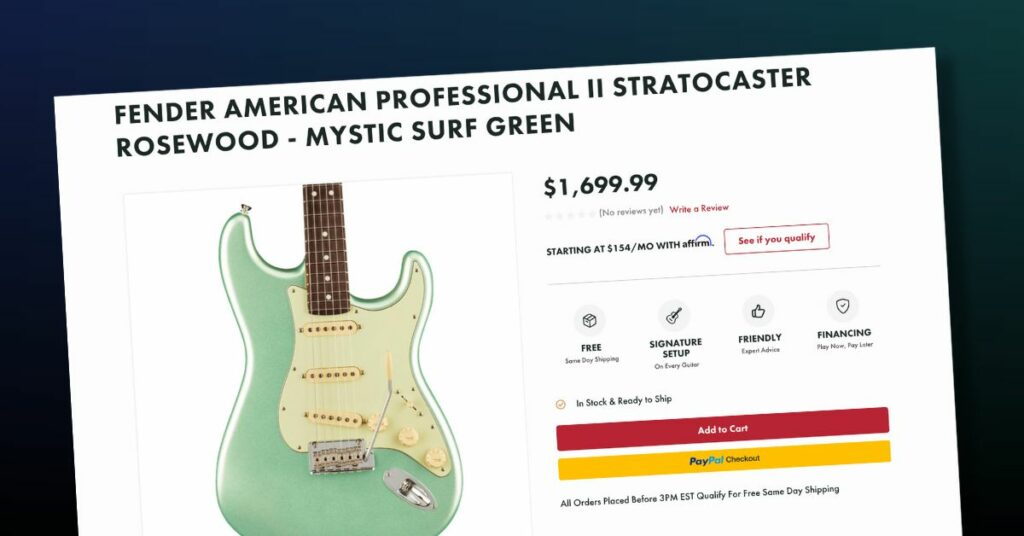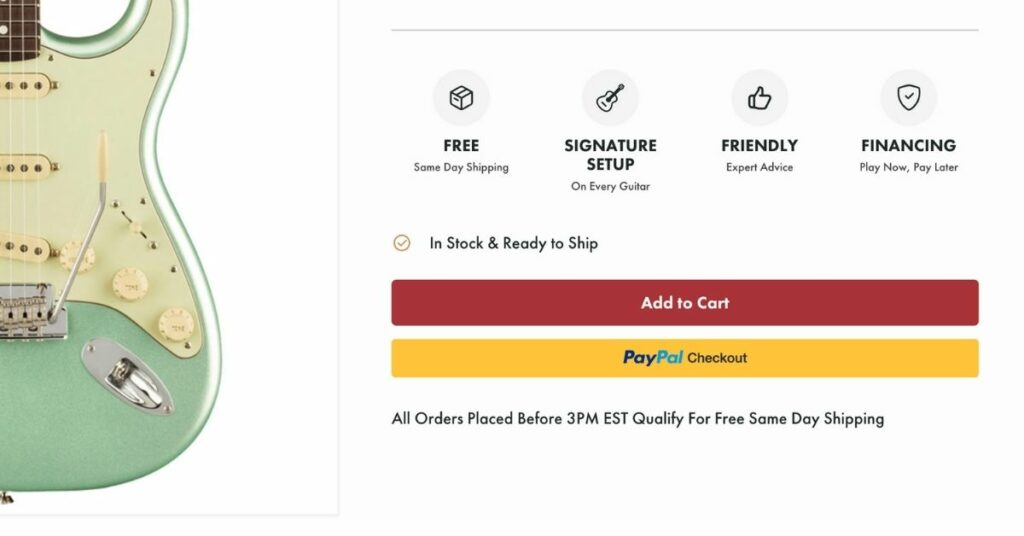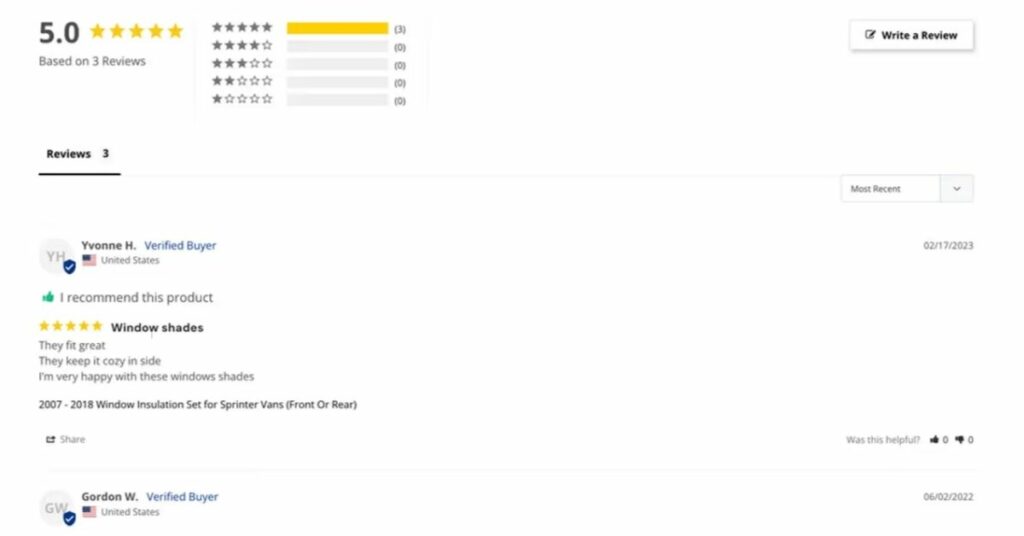E-commerce has transformed the way we shop. From the comfort of our homes, we can explore a world of products with just a few clicks. But have you ever wondered what makes an online product page so engaging?
Enter the PDP.
PDP stands for Product Detail Page. Think of it as the digital storefront for each product in an online store. It’s where you find all the juicy details about a product, from images and descriptions to reviews, shipping options, and prices.
In the vast world of e-commerce, PDPs play a starring role. They’re the bridge between browsing and informed buying decisions. A well-crafted PDP can be the difference between a customer clicking “add to cart” or leaving the ecommerce site alone.
98% of shoppers have abandoned a purchase because of incomplete or unclear product information. That’s how crucial a PDP is in the e-commerce journey.
PDP Defined: Unraveling the Essence of E-commerce Product Pages
Navigating through an online store, you’re often drawn to detailed presentations of products. These dedicated spaces, known as Product Detail Pages, or PDPs, serve as the digital spotlight, illuminating the product’s features and benefits.
In the e-commerce lexicon, PDP translates to Product Detail Page. It’s akin to a product’s individual display in a traditional retail setting. But in the digital realm, this display is enriched with vibrant images, compelling descriptions, authentic reviews, and more.
The Strategic Importance of PDP in E-Commerce
A PDP isn’t merely a static page; it’s a dynamic marketing asset. This is the pivotal point where online shoppers make the crucial buying decision: to purchase or to pass. An effectively crafted PDP not only elevates conversions but also enhances user engagement and augments SEO visibility.
Intrigued about optimizing your ecommerce PDPs for maximum impact? Or pondering over the integration of PDPs in a holistic e-commerce blueprint? Explore our comprehensive guide on ecommerce PDP optimization for deeper insight.

Anatomy of an Effective E-Commerce PDP
The Product Detail Page (PDP) serves as the linchpin of a customer’s shopping experience. It’s the digital storefront, the virtual showcase, and often the deciding factor in a customer’s journey from browsing to purchasing. Let’s dissect the essential elements that constitute a high-converting PDP.
Visual Appeal:
Images and digital assets First impressions matter. High-resolution images, engaging videos, and interactive 360-degree views offer a tactile experience in a digital realm. It’s essential for these visual assets to be clear and zoomable, offering multiple angles and perspectives. Including product variations, such as colors or sizes, can further enhance the visual appeal and provide customers with a comprehensive view of what they’re purchasing.
Informative Content:
Title, Description, and Bullet Points A compelling narrative begins with a captivating title, followed by a description that delves deeper, painting a vivid picture of the product’s benefits and features. The title should be concise yet descriptive; the product description should be informative and engaging; and bullet points should succinctly spotlight key features and product benefits.
Key Elements of a Successful PDP:
- Price and Availability: Transparent pricing without hidden fees, coupled with real-time stock status, assures customers and reduces cart abandonment.
- Call to Action: Vibrant and noticeable ‘Add to Cart’ or ‘Buy Now’ buttons, strategically placed to guide the user’s journey.
- Engagement Boosters: Authentic user reviews, star ratings, and user-generated content provide social proof, building trust and credibility.
- Optimization: Ensuring fast loading times, mobile responsiveness, and SEO-friendly content enhances the user experience and search engine visibility.
Additional enhancements for PDPs:
Interactive features such as size guides, virtual try-ons, or chatbots can enhance the user experience and address queries in real time. Displaying related products for cross-selling and upselling can increase the average order value. Showcasing security badges assures customers of safe transactions, further building trust.
By meticulously crafting each element of the product detail, businesses can create a seamless and engaging shopping experience, leading to increased conversions and customer loyalty.

The Power of PDP in Marketing and SEO
When competition is fierce and attention spans are short, a well-optimized Product Detail Page (PDP) can be a game-changer. Beyond its primary function of presenting a product details page, a PDP holds significant power in the realms of both marketing strategy and search engine optimization (SEO). Let’s explore how.
A PDP is not just a static display; it’s a dynamic marketing tool. Every element, from the product images to the call-to-action buttons, plays a role in guiding the customer’s journey.
By understanding the psychology of online shoppers and tailoring the product detail to address their needs and pain points, businesses can effectively drive conversions and increase sales.
Enhancing brand perception
The design, content, and overall user experience of a PDP reflect the brand’s values and identity. A well-crafted ecommerce product detail page can enhance brand perception, build trust, and foster loyalty among customers. It’s an opportunity for brands to tell their story, showcase their uniqueness, and create a memorable shopping experience.
Boosting SEO rankings
In the world of ecommerce sites, visibility is key. A PDP optimized for search engines can significantly boost the rankings of an ecommerce website, driving organic traffic and increasing visibility. Elements like keyword-rich product descriptions, high-quality images with alt text, and user-generated content like reviews can enhance SEO. Moreover, with the rise of voice search and mobile shopping, ensuring that the ecommerce product detail page is mobile-optimized and voice-search-friendly is crucial.
Leveraging social proof for trust
Incorporating user reviews, ratings, and testimonials on the PDP can significantly influence purchasing decisions. This social proof acts as a trust-building mechanism, assuring potential customers of the product’s high-quality product images, and value.
Integrating with advertising campaigns
PDPs can be seamlessly integrated with advertising campaigns, especially on platforms like Facebook and Google. By linking ads directly to optimized PDPs, businesses can reduce the steps to purchase, leading to higher conversion rates.
Your product detail page is not just a product showcase; it’s a strategic asset in the e-commerce toolkit.
By harnessing its potential in marketing, product data, and SEO, businesses can drive growth, enhance brand value, and stay ahead in the competitive e-commerce landscape.

Optimizing PDP for Maximum Impact
A product detail page (PDP) can make or break a sale. But how can businesses ensure their PDPs are optimized for maximum impact? By focusing on key elements and best practices, businesses can create PDPs that not only attract visitors but also convert them into loyal customers.
User experience (UX) is paramount.
At the heart of every successful PDP is a seamless user experience. From easy navigation to quick loading times, ensuring that users can effortlessly interact with the PDP is crucial. This includes:
- Responsive Design:
Ensuring the product detail page looks and functions well on all devices, especially mobiles - Intuitive Layout:
Organizing information in a logical manner makes it easy for users to find what they’re looking for. - Clear Call-to-Action:
Using vibrant colors and strategic placement for ‘Add to Cart’ or ‘Buy Now’ buttons
Content is King.
While visuals attract, it’s the content that informs and persuades. Crafting compelling product descriptions, using high-quality images, and providing all necessary product details can significantly enhance the PDP’s effectiveness.
Engaging product titles capture attention, detailed descriptions highlight the product’s features and benefits, and high-resolution images with zoom functionality offer a closer look.
Leveraging social proof
As online shopping lacks the tactile experience of traditional shopping, customers often rely on others’ opinions before making a purchase.
User reviews and ratings offer insights into the experiences of previous buyers.
Testimonials and user-generated content showcase the product in real-world scenarios, and trust badges and certifications further enhance credibility, assuring potential buyers of the product’s high-quality product image, and the brand’s authenticity.
SEO and technical optimization
Behind the scenes, technical optimization can boost the PDP’s visibility on search engines. This includes:
- Using keyword-rich content without keyword stuffing
- Implementing schema markup for better search engine understanding
- Ensuring fast loading times and mobile optimization.
Incorporating these best practices can transform a full PDP ecommerce, from a mere product showcase into a powerful conversion tool. By continuously analyzing, testing, and optimizing, businesses can ensure their PDPs remain effective and competitive in the ever-evolving e-commerce world.
Harnessing the Power of PDP for SEO and Beyond
Visibility is as crucial as the quality of the ecommerce product detail page itself. A well-optimized Product Detail Page (PDP) not only serves to inform and persuade potential buyers but also plays a pivotal role in a website’s search engine rankings. Let’s delve into how PDPs can be harnessed for SEO and the broader benefits they bring to the table.
SEO: More Than Just Keywords
While integrating relevant keywords into your ecommerce product details page is essential, modern SEO practices go beyond mere keyword stuffing.
The structure of the content, the quality of backlinks, and user engagement metrics like bounce rate and dwell time all influence how search engines rank an ecommerce product detail page. By ensuring that the content is both user-friendly and search engine-friendly, businesses can achieve higher organic rankings, driving more traffic to their products.
Enhancing user engagement
A PDP is more than just a static web page; it’s an interactive platform. Features like Q&A sections, live chat support, and interactive media such as videos or 3D product views can significantly enhance user engagement.
The longer a user stays on the product detail page and interacts with its content, the higher the chances of conversion.
Online shoppers can’t physically inspect a product, so trust becomes paramount. Providing detailed product specifications, transparent pricing, and clear shipping and return policies can build this trust. Additionally, showcasing certifications, awards, or third-party verifications can further show brand integrity and assure potential buyers of the product’s quality and the brand’s credibility.
Integration with Broader Marketing Strategies
A PDP shouldn’t exist in isolation. Integrating it with broader marketing strategies, such as retargeting campaigns, email marketing, or social media promotions, can amplify its reach and effectiveness. For instance, a user who viewed a product but didn’t make a purchase can be retargeted with ads, bringing them back to the product detail page and increasing the likelihood of conversion.
A well-optimized PDP serves as a nexus between the brand and its customers. By focusing on both SEO and user-centric strategies, businesses can maximize the potential of their PDPs, driving sales and fostering lasting customer relationships.

The Future of PDPs in E-Commerce Evolution
The e-commerce landscape is in a constant state of flux, shaped by technological advancements, consumer behavior shifts, and market dynamics. As this digital realm evolves, so does the role and design of the ecommerce Product Detail Page (PDP). Let’s gaze into the future and envision the next wave of product detail page innovations.
Augmented reality (AR) and virtual try-on
The line between the physical and digital shopping experience is blurred.
With the advent of AR, customers can now “try on” products virtually. Be it a pair of shoes, a piece of furniture in their living room, or a new shade of lipstick, this immersive experience not only enhances user engagement but also reduces return rates by offering a more accurate product preview.
AI-Powered Personalization and Dynamic Content
Artificial intelligence (AI) is set to redefine the e-commerce customer experience again. With AI’s capabilities, PDPs can offer:
- Real-time Adaptation: Tailoring content based on user preferences and browsing history
- Dynamic Pricing: Adjusting prices based on demand, user behavior, or special promotions
- Personalized Recommendations: Suggesting products that align with the user’s interests and past purchases
- Interactive Content: Showcasing 3D product animations, user-generated galleries, and more for an enriched user experience.
Voice Search and Seamless Integration
As voice-activated devices like Alexa and Google Home become household staples, optimizing PDPs for voice search is becoming increasingly crucial. This involves crafting content that answers common user queries and ensuring fast loading times. Moreover, integrating schema markup can enhance voice search comprehension, making the shopping experience more seamless.
Sustainability, Ethical Branding, and Consumer Values
Modern consumers are not just buying products; they’re investing in values. PDPs of the future will highlight sustainable practices, fair-trade certifications, and ethical sourcing.
By resonating with eco-conscious buyers and showcasing a brand’s commitment to ethical practices, businesses can build stronger, more loyal customer relationships.
The PDPs of tomorrow will be multifaceted, blending technology with evolving consumer values. E-commerce businesses that stay ahead of these trends and continuously innovate will ensure their product detail pages remain at the forefront of the digital shopping experience.

The Crucial Role of Visual Appeal and Information Content
In e-commerce, first impressions matter immensely. When a potential customer lands on a product detail page (PDP), the visual elements and the richness of all the information presented play a pivotal role in guiding their purchase decision and buying process. Let’s delve deeper into the importance of these two facets and how they can be optimized for maximum impact.
A picture is worth a thousand words.
The human brain processes visuals much faster than text. High-quality images, interactive zoom features, and 360-degree product views allow customers to get a near-tangible feel of the product. Videos, on the other hand, can showcase the same product well in action, highlighting its features, benefits, and potential use cases.
These visual elements not only enhance the aesthetic appeal of the product detail page but also build trust by offering a transparent view of the product.
While visuals attract, it’s the depth and clarity of information that inform and persuade. A well-crafted product description, detailed specifications, and clear pricing details are essential. However, it’s crucial to strike a balance. Overloading the product details with excessive information can overwhelm the user, while too little information can leave them with unanswered questions.
Integrating features like collapsible sections or tabs can help present information in digestible chunks, allowing users to explore relevant details, as per their interests.
User-Generated Content: The Authentic Voice of Customers
Beyond professional photos and crafted descriptions, user-generated content (UGC) like customer reviews, ratings, and photos can offer a genuine perspective. This authentic voice of previous buyers can provide invaluable insights, build trust, and significantly influence potential buyers’ decisions.
In essence, the synergy between captivating visuals and comprehensive, relevant information can transform a product detail page into a powerful sales tool.
By continuously refining these elements based on user feedback and analytics, businesses can create PDPs that resonate with their target audience, driving conversions and fostering brand loyalty.
Technical Aspects: Ensuring Seamless Functionality and Performance
Behind the visually appealing and content-rich facade of a Product Detail Page (PDP) lies a robust technical foundation. This foundation ensures that the PDP not only looks good but also functions seamlessly, offering users a smooth and efficient shopping experience. Let’s explore the technical aspects that are crucial for a high-performing product detail page.
Speed Matters: Optimizing for Quick Load Times
In the fast-paced digital world, every second counts. Slow-loading PDPs can deter potential buyers, leading to increased bounce rates and lost sales opportunities. To ensure swift loading of your product detail page, consider the following optimizations:
- Compressing images for faster loading.
- Leveraging browser caching to reduce load times
- Minimizing server response times.
- Implementing content delivery networks (CDNs) for quicker content delivery
Mobile Optimization: Catering to the On-the-Go Shopper
With a significant chunk of online shopping happening on mobile devices, a mobile-optimized PDP is no longer a luxury—it’s a necessity. Responsive design ensures that the product detail page adjusts to different screen sizes, offering a consistent shopping experience across devices. Touch-friendly buttons, easy-to-read fonts, and streamlined navigation further enhance the mobile shopping experience.
Security: Building Trust with Safe Transactions
Online shoppers entrust businesses with their personal and financial information. Ensuring that this data is secure is paramount.
Implementing SSL certificates, using secure payment gateways, and regularly updating security protocols can instill confidence in users, assuring them that their transactions are safe.
Intuitive Navigation and Search Functionality
A PDP should be easily accessible. Intuitive site navigation, clear product categorization, and efficient search functionality ensure that users can quickly find all the relevant information about products they’re looking for.
Features like auto-suggestions, filters, and breadcrumbs further streamline the user journey, leading them to the product detail page with minimal clicks.
Seamless Integration with Backend Systems
For businesses, the product detail page should seamlessly integrate with inventory management, customer relationship management (CRM), and other backend systems. This ensures real-time updates on product availability, prices, and promotions, offering users accurate and up-to-date information.
The visual and content elements of a PDP capture attention; it’s the technical backbone that ensures a seamless and efficient user experience. Investing in robust technical infrastructure and regular optimizations can elevate the product detail page’s performance, leading to higher user satisfaction and increased sales conversions.
Leveraging user feedback and analytics for continuous improvement
In the dynamic world of e-commerce, staying stagnant is not an option. To ensure that a product detail page (PDP) remains effective and resonates with the target audience, businesses must adopt a proactive approach to continuous improvement.
This involves leveraging user feedback and harnessing the power of analytics. Let’s delve into how these tools can be utilized to refine and enhance the PDP experience.
The Goldmine of User Feedback
Direct feedback from users offers invaluable insights into their preferences, pain points, and overall shopping experience. Encouraging users to provide feedback, be it through surveys, reviews, or direct interactions, can shed light on areas for improvement. Some common feedback areas might include:
- Product information is clear.
- Ease of navigation.
- Visual appeal and multimedia elements.
- Checkout process and payment options
By addressing these concerns and implementing suggested changes, businesses can create a product detail page that truly aligns with user expectations.
Harnessing analytics for data-driven decisions
Modern analytics tools offer a treasure trove of data that can be analyzed to understand user behavior on the PDP. Key metrics to monitor include:
- Bounce rate: the percentage of visitors who leave the product detail page without taking any action.
- Dwell time: the amount of time users spend on the product details.
- Conversion rate: the percentage of visitors who make a purchase.
- User flow: The path users take through the site leading to and from the PDP
By studying these metrics, businesses can identify bottlenecks, areas of friction, and opportunities for enhancement. For instance, a high bounce rate might indicate that the PDP isn’t immediately engaging, prompting a review of the visual elements or content structure.
A/B Testing: The Experimentation Approach
One of the most effective ways to optimize the PDP is through A/B testing. This involves creating two versions of the PDP with variations in design, content, or features. By directing traffic to both versions and comparing performance metrics, businesses can determine which version resonates more with users and drives better results.
The journey to creating the perfect PDP is ongoing. By actively seeking user feedback, diving deep into analytics, and experimenting with different approaches, businesses can ensure that their PDP remains a powerful tool in their e-commerce arsenal, driving conversions and fostering customer loyalty.
SEO and PDP: Boosting Visibility and Organic Traffic
In today’s digital age, having a well-designed Product Detail Page (PDP) is only half the battle. The other half? Ensuring that potential customers can easily find it. This is where search engine optimization (SEO) comes into play. SEO strategies tailored for PDPs can significantly boost their visibility on search engines, driving organic traffic and increasing sales opportunities. Let’s explore the symbiotic relationship between SEO and PDP.
Keywords: The Cornerstone of SEO
At the heart of SEO lies keyword optimization. By understanding the terms and phrases potential customers use to search for products, businesses can optimize their PDPs to rank higher in search results. Incorporating these keywords naturally into product titles, descriptions, and meta tags ensures that the PDP is relevant to user queries.
Optimized Images: A Double Win
Images play a dual role in product details. While they enhance visual appeal, they also offer SEO benefits. Using descriptive file names, adding alt text, and ensuring images are compressed for faster loading can improve search engine rankings and enhance the user experience.
Rich Snippets: Enhancing Search Presence
Rich snippets provide additional, relevant information customers see about a product directly in search results, such as price, availability, and reviews. By integrating schema markup into the PDP, businesses can enhance their search presence, making their products stand out and enticing users to click.
Mobile Optimization: Catering to the Mobile Shopper
With mobile searches surpassing desktop searches, ensuring that the PDP is mobile-friendly is crucial for SEO. A mobile-optimized PDP not only offers a better user experience but also receives a ranking boost from search engines.
Backlinks: Building Authority and Trust
Backlinks, or links from other reputable ecommerce websites to the PDP product page, signal to search engines that the product page is trustworthy and authoritative. Collaborating with influencers, guest posting, and getting featured in industry publications can generate quality backlinks, bolstering the product detail SEO.
Search engines take note of how users interact with a PDP. Metrics like dwell time, bounce rate, and click-through rate provide insights into the page’s relevance and quality. A PDP that engages users and keeps them on the page is likely to rank higher.
SEO and PDP are intertwined. A well-optimized PDP not only attracts organic traffic but also ensures that site visitors have a positive, engaging experience, increasing the likelihood of conversions. By integrating SEO best practices into PDP design and content, e-commerce businesses can maximize their online visibility and reach their target audience effectively.

The Interplay Between PDP and Other E-Commerce Elements
The Product Detail Page (PDP) does not operate in isolation within the e-commerce ecosystem. It is intricately linked to other elements of the online shopping experience, creating a seamless journey for the customer from discovery to purchase.
Understanding the interplay between the core components of the PDP and these elements is crucial for optimizing the overall user experience. Let’s explore how the PDP interacts with other key e-commerce components.
Product Listing Page (PLP) and PDP: The Discovery to Detail Transition
- The PLP serves as the gateway to multiple products, showcasing a variety of options based on the user’s search or category selection.
- The transition from PLP to PDP is a critical moment in the customer’s journey, moving from browsing to considering a specific product.
- Ensuring a smooth and intuitive transition with clear calls-to-action and consistent design elements helps maintain user engagement and interest.
Shopping Cart and PDP: Facilitating the Purchase Decision
- The PDP plays a vital role in convincing the user to add a product to their shopping cart, requiring a balance of persuasive content and clear options for variations like size or color.
- Providing options for related products or accessories directly in the product detail can encourage additional purchases, increasing the average order value.
- Ensuring that the “Add to Cart” button is prominent and the next steps are clear helps streamline the journey towards checkout.
Checkout Process and PDP: The Final Steps to Conversion
- The information and confidence instilled by the product detail influence the user’s willingness to proceed through the checkout process.
- Providing clear and accurate product details, shipping information, and return policies on the PDP helps reduce uncertainty and potential friction during checkout.
- Streamlining the transition from PDP to checkout, possibly with options for express checkout, ensures a smooth final step in the conversion funnel.
Customer Reviews and PDP: Building Trust and Credibility
- Integrating customer reviews and ratings directly on the PDP provides social proof, helping to build trust and influence the purchase decision.
- Encouraging users to leave reviews and share their experiences contributes to a rich repository of user-generated content, enhancing the PDP’s credibility.
Mobile Experience and PDP: Catering to the On-the-Go Shopper
- With a significant portion of e-commerce traffic coming from mobile devices, optimizing the PDP for mobile is non-negotiable.
- Ensuring that the PDP is responsive, with fast load times and touch-friendly design elements, provides a seamless experience for mobile users.
The PDP is a pivotal element in the e-commerce journey, intricately connected to various other components of the online shopping experience. By understanding and optimizing these interactions, businesses can create a cohesive and user-friendly journey, leading to higher engagement, conversions, and customer satisfaction.
Best Practices: Crafting a High-Converting PDP
Creating a Product Detail Page (PDP) that not only informs but also persuades users to make a purchase is an art backed by science.
While the design and content play a significant role, there are certain best practices that, when followed, can significantly enhance the effectiveness of a PDP. Let’s delve into these tried-and-tested strategies to craft a high-converting PDP.
- Clear and concise product titles
The product title is often the first thing a user sees. Ensure it is descriptive yet concise, highlighting the main features or benefits of the product. - High-Quality Imagery
Invest in professional product photography. Multiple angles, zoom-in features, and 360-degree views can provide a comprehensive visual understanding of the product. - Comprehensive product descriptions
While it’s essential to be descriptive, avoid overwhelming users with excessive jargon. Highlight key features, benefits, and use cases in an easy-to-read format. - Transparent Pricing and Discounts
Clearly display the product price, any discounts or promotions, and additional costs like shipping or taxes. Transparency builds trust and reduces cart abandonment. - Social Proof through Reviews and Ratings
Showcase genuine customer reviews and ratings. Positive feedback can significantly influence potential buyers, while constructive criticism can offer insights for improvement. - Clear Call-to-Action (CTA)
Whether it’s “Add to Cart,” “Buy Now,” or “Save for Later,” ensure that the CTA is prominent, compelling, and intuitive. - Availability and Delivery Information
Clearly state product availability, potential stock limitations, and estimated delivery times. This sets clear expectations and can influence the purchase decision. - Mobile Optimization
Ensure the PDP looks and functions seamlessly across devices, especially on mobile, where a significant portion of users might be browsing. - Cross-selling and up-selling
Intelligently recommend related products or premium versions. This not only enhances the user experience but can also increase the average order value. - Easy Navigation and Return Policy
Ensure users can easily navigate to other sections of the site and access information like return policies without much hassle. - Secure and Diverse Payment Options
Offer multiple payment methods and ensure transactions are secure. Display security badges to build trust.
While every product and target audience might be unique, these best practices provide a solid foundation for crafting a PDP that not only looks good but also converts effectively. By continuously refining the PDP based on user feedback and analytics, businesses can ensure they offer an optimal shopping experience, leading to increased sales and customer loyalty.
Common PDP Pitfalls and How to Avoid Them
While crafting an effective product detail page (PDP) is crucial for any ecommerce website success, it’s equally important to be aware of common pitfalls that can deter potential customers. By recognizing these challenges and implementing strategies to counteract them, ecommerce businesses can ensure a seamless and engaging user experience. L
Let’s explore some of the most common PDP pitfalls and how to avoid them.
1. Overwhelming Product Information
- Pitfall: Bombarding users with excessive details and technical jargon.
- Solution: Simplify product descriptions, highlighting key features and benefits in a concise manner. Use bullet points and subheadings for easy readability.
2. Poor-quality images
- Pitfall: using low-resolution or poorly lit product photos.
- Solution: Invest in high-quality product photography. Ensure images are clear, well-lit, and showcase the product from multiple angles.
3. Hidden Costs
- Pitfall: Surprising users with additional costs like shipping or taxes at the checkout stage.
- Solution: Be transparent about all costs upfront. Clearly display any additional charges on the PDP itself.
4. Lack of Social Proof
- Pitfall: not showcasing customer reviews or ratings.
- Solution: Encourage satisfied customers to leave reviews and ratings. Display these prominently on the PDP to build trust.
5. Not mobile-friendly
- Pitfall: A PDP that doesn’t render well on mobile devices, leading to a frustrating user experience.
- Solution: Ensure the PDP is responsive and optimized for mobile viewing. Regularly test on different devices to ensure compatibility.
6. Ambiguous Call-to-Action (CTA)
- Pitfall: Unclear or hidden CTAs that confuse users.
- Solution: Make the CTA buttons prominent and use clear, action-oriented language like “Add to Cart” or “Buy Now.”
7. Limited Payment Options
- Pitfall: offering only a few payment methods, which might not be convenient for all users.
- Solution: Integrate multiple payment options, catering to a wider audience and ensuring a smooth checkout process.
8. Ignoring SEO
- Pitfall: not optimizing the PDP for search engines, leading to reduced visibility.
- Solution: Incorporate relevant keywords naturally into the content, optimize images, and ensure the PDP loads quickly for better search engine rankings.
9. Neglecting User Feedback
- Pitfall: Overlooking valuable insights from user feedback and reviews.
- Solution: Actively seek feedback and make necessary adjustments to the PDP based on user suggestions and concerns.
10. Inconsistent Design
- Pitfall: A PDP design that doesn’t align with the overall ecommerce website theme, leading to a disjointed user experience.
- Solution: Ensure design consistency across all pages, using similar fonts, colors, and layouts.
While crafting a PDP is a meticulous process, being aware of potential pitfalls and proactively addressing them can significantly enhance the user experience. By focusing on transparency, user feedback, and consistent design, businesses can create a PDP that not only informs but also persuades, leading to higher conversions and customer satisfaction.

The Ever-Evolving Nature of PDPs and Staying Ahead
The e-commerce landscape is dynamic, with technological advancements and changing consumer behaviors continually reshaping the way businesses operate online. At the heart of this digital transformation lies the Product Detail Page (PDP), a critical touchpoint that bridges the gap between a product attributes potential customer’s interest and their decision to purchase.
As we’ve explored throughout this article, crafting an effective PDP is a blend of art and science. It requires a deep understanding of the target audience, a keen eye for design, and a commitment to continuous improvement.
From ensuring visual appeal to optimizing for search engines, every element of the PDP plays a pivotal role in influencing the user’s journey.
It’s essential to remember that what works today might not necessarily be effective tomorrow. Consumer preferences evolve, new technologies emerge, and industry best practices shift. To stay ahead in this competitive landscape, businesses must adopt a proactive approach, regularly reviewing and updating their PDPs based on data-driven insights and user feedback.
Incorporating the latest technological innovations, such as AI-powered recommendations or augmented reality previews, can further enhance the PDP experience, setting the stage for increased conversions and customer loyalty.
The PDP is more than just a product showcase; it’s a reflection of a brand’s commitment to delivering value and building trust. By staying attuned to the ever-evolving nature of e-commerce and prioritizing the user experience, businesses can ensure that their PDPs remain effective, engaging, and conversion-driven in the years to come.


